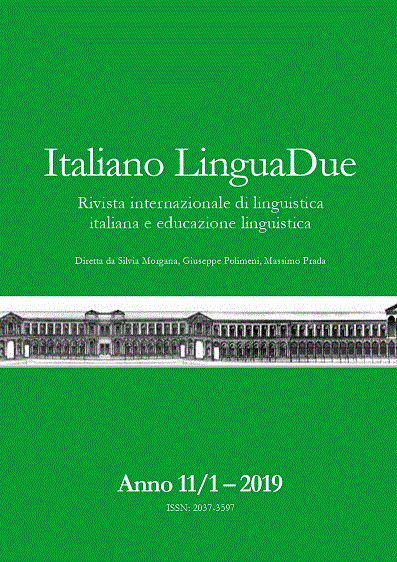MISURARE L’ADEGUATEZZA FUNZIONALE IN TESTI SCRITTI DI APPRENDENTI DI ITALIANO L2
DOI:
https://doi.org/10.13130/2037-3597/11843Abstract
Il presente lavoro prende in esame l’aspetto della valutazione dell’adeguatezza funzionale nella scrittura in lingua seconda. Si tratta di un costrutto interazionale che pone al centro l’efficacia della trasmissione di un messaggio e la felice esecuzione di un compito comunicativo. Lo studio mette alla prova una scala di valutazione per l’adeguatezza funzionale basata su quattro distinte dimensioni: contenuto, comprensibilità, risposta ai requisiti del compito, coerenza/coesione. Il testing della scala è stato realizzato grazie a 4 valutatori di madrelingua italiana non esperti, che hanno dovuto giudicare i testi prodotti da 40 informanti (studenti universitari di madrelingua ungherese iscritti nei corsi di Italianistica dell’Università di Debrecen). Il campione di apprendenti è stato costruito per rispecchiare un’ampia gamma di livelli di competenza linguistico-comunicativa (da A2 a C1). Ogni informante ha prodotto 3 testi: uno narrativo, uno argomentativo, uno regolativo. I giudizi dei valutatori sono stati incrociati per misurare attraverso una serie di test statistici: l’affidabilità globale della scala; la coerenza tra le valutazioni dei 4 partecipanti; la correlazione tra il livello di competenza degli apprendenti e le dimensioni dell’adeguatezza funzionale.
Measuring functional adequacy in written texts of italian L2 learners
The present study examines the assessment of functional adequacy in second language writing. Functional adequacy can be defined as interactional constructs that focus on the effectiveness of the transmission of a message and the successful execution of a communicative task. The study tests an evaluation scale for functional adequacy based on four distinct dimensions: content, comprehensibility, response to task requirements, coherence/cohesion. The testing of the scale was carried out thanks to 4 non-expert Italian native speakers, who had to judge the texts produced by 40 informants (Hungarian native speaking university students enrolled in Italian Studies at the University of Debrecen). The sample of learners was built to reflect a wide range of linguistic-communicative competence levels (from A2 to C1). Each informant wrote 3 texts: narrative, argumentative and instructions. A series of statistical tests were run on the evaluators' ratings in order to measure: the overall reliability of the scale; the consistency between the evaluations of the 4 participants; the correlation between the level of competence of the learners and the dimensions of functional adequacy.




